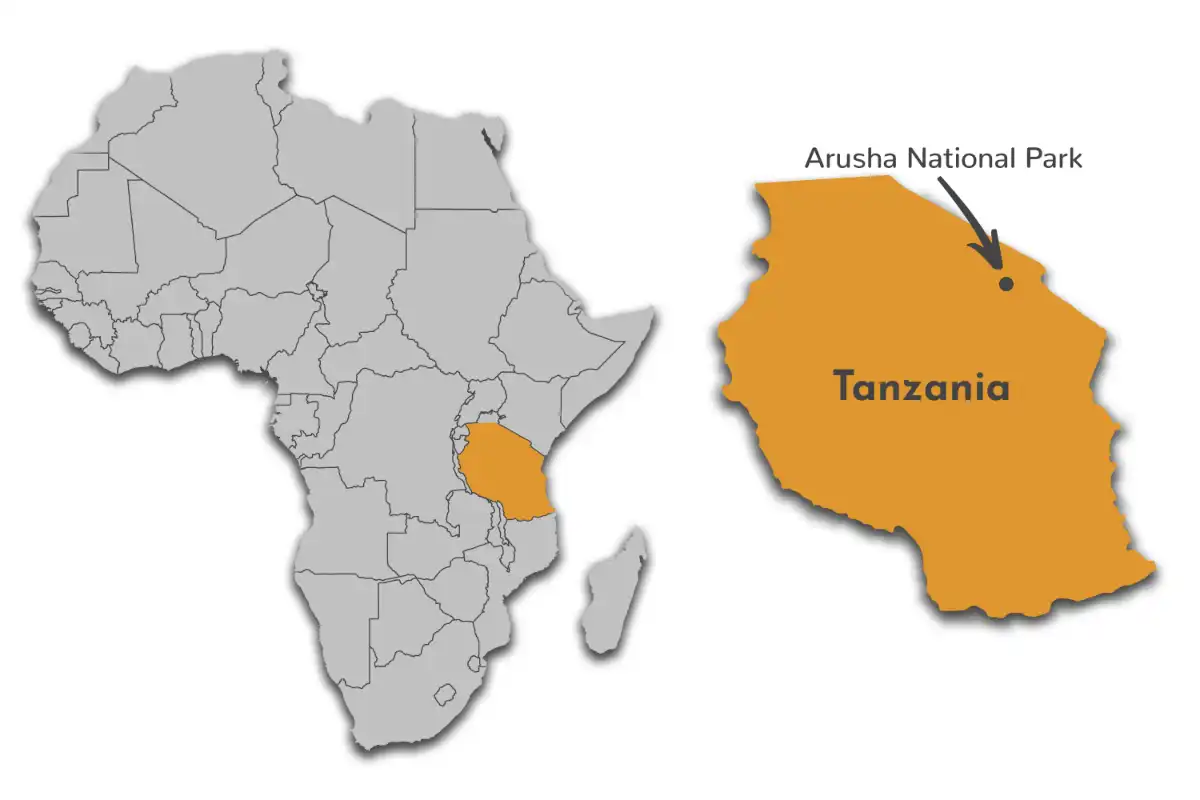Amani Hostel
Amani hostel is Offering the best affordable hostel accommodation in Arusha Amani Hostel is situated in Arusha, 1km from Shoppers supermarket, Guests can enjoy having a bed including bed,...

Starting from
$285PP
Arusha National Park covers Mount Meru, an eminent volcano with an elevation of 4566 m, in the Arusha Region of northeastern Tanzania. The park is just a few kilometres northeast of Arusha, though the main gate is 25 km east of the city. It is also 58 km from Moshi and 35 km from Kilimanjaro International Airport (KIA).
The park is small in size but varied with breathtaking landscapes in three distinct areas. In the west, the Meru Crater funnels the Jekukumia River and the peak of Mount Meru lies on its rim. Ngurdoto Crater in the southeast is grassland. The shallow alkaline Momella Lakes in the northeast have varying algal colours and are known for their wading birds. The range of wildlife animals to spot here is usually less. Among the Big 5 animals, the only buffalo can be seen here regularly.
Wildlife8 Animals
High SeasonJuly to March
Best Time to GoJune to October (easier to spot animals)

Arusha National Park has a significant variety of wildlife, but visitors shouldn't expect the same game-viewing experience they find in other national parks of Tanzania's northern circuit. In spite of the small size, common animals including the giraffe, Cape buffalo, zebra, warthog, the black-and-white colobus monkey, the blue monkey, flamingo, elephant, bushbuck and many other African animals can be spotted. Leopards, cheetahs, Wild dogs and hyenas are present in Arusha but can be seen very rarely.
An impressive number of blue monkeys and black-and-white colobus monkeys are present in this park and can't be found in any other region of northern Tanzania. Visitors can expect to see the Cape Buffalo, elephants, monkeys, baboons, warthogs, and a number of different antelope species in Ngurdoto Crater. Elephants, buffalo, colobus monkeys, the red duiker, suni, leopards, and even tree-dwelling pythons can be found in the heavily forested region of Tululusia Hill.
The best time to visit Arusha National Park is throughout the year – But in the dry season from June to October animals are easier to observe as they congregate near freshwater sources, rainfall is minimal, foliage is less dense and mosquito levels are reduced. In the Wet season (March to April), some of the roads might become difficult to navigate, which can interfere with your wildlife viewing experience.
The Arusha National Park and the Momella Lakes is the perfect place for bird-watching. The national park is inhabited by over 400 different migrant and resident bird species. The most famous bird species in the Arusha National Park are waterfowls such as little grebes, eagles, pochards, geese, hamerkop, red sharks, spurwinged goose, woodpeckers, herons, secretary birds, and grey parrots.
Arusha NP is perfect for birding year-round. Migratory birds from Europe and North Africa are present from November to April, and resident birds have their breeding plumage. For bird watching, this will be the perfect timing.
The best time to visit Arusha National Park is from June to October - the dry season when the animals are easier to spot as they congregate near fresh water sources, rainfall is minimal, foliage is less dense and mosquito levels are reduced. From November to December and March through May, the rains transform the landscape as lush, green grasses emerge, and this is also the time when migratory birds arrive in the park. Arusha National Park is one of Tanzania's hidden gems, so the park is never crowded. January and February are also semi-dry months as they are set in between the two rainy seasons.
Best Time
June to October (easier to spot animals)
High Season
All year round (The park never gets too crowded)
Low Season
April and May
Best Weather
June to October (Little rainfall)
Worst Weather
March and April (Peak of Wet season)
